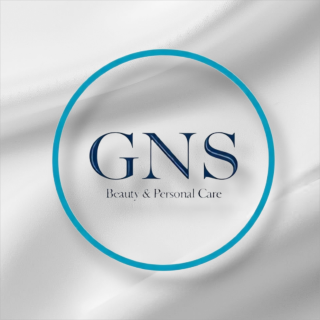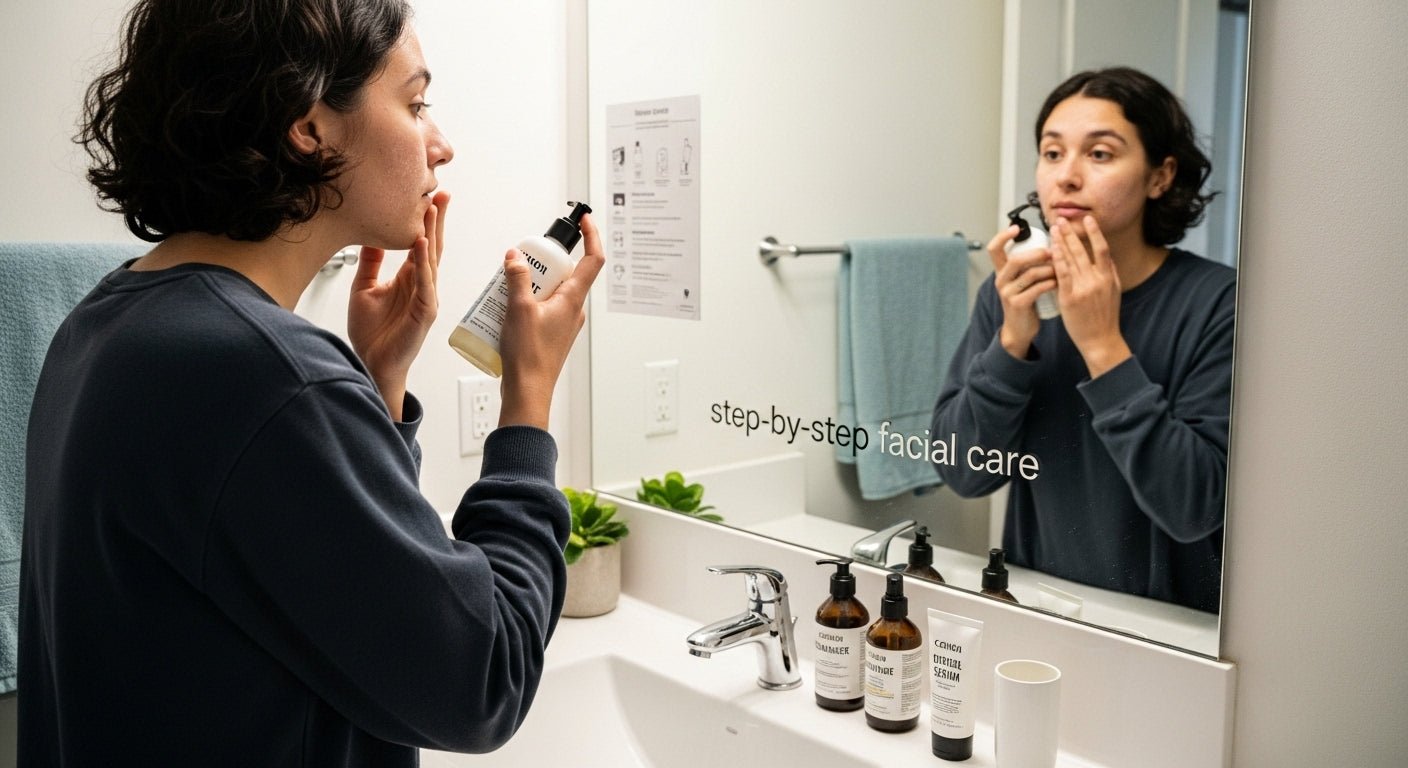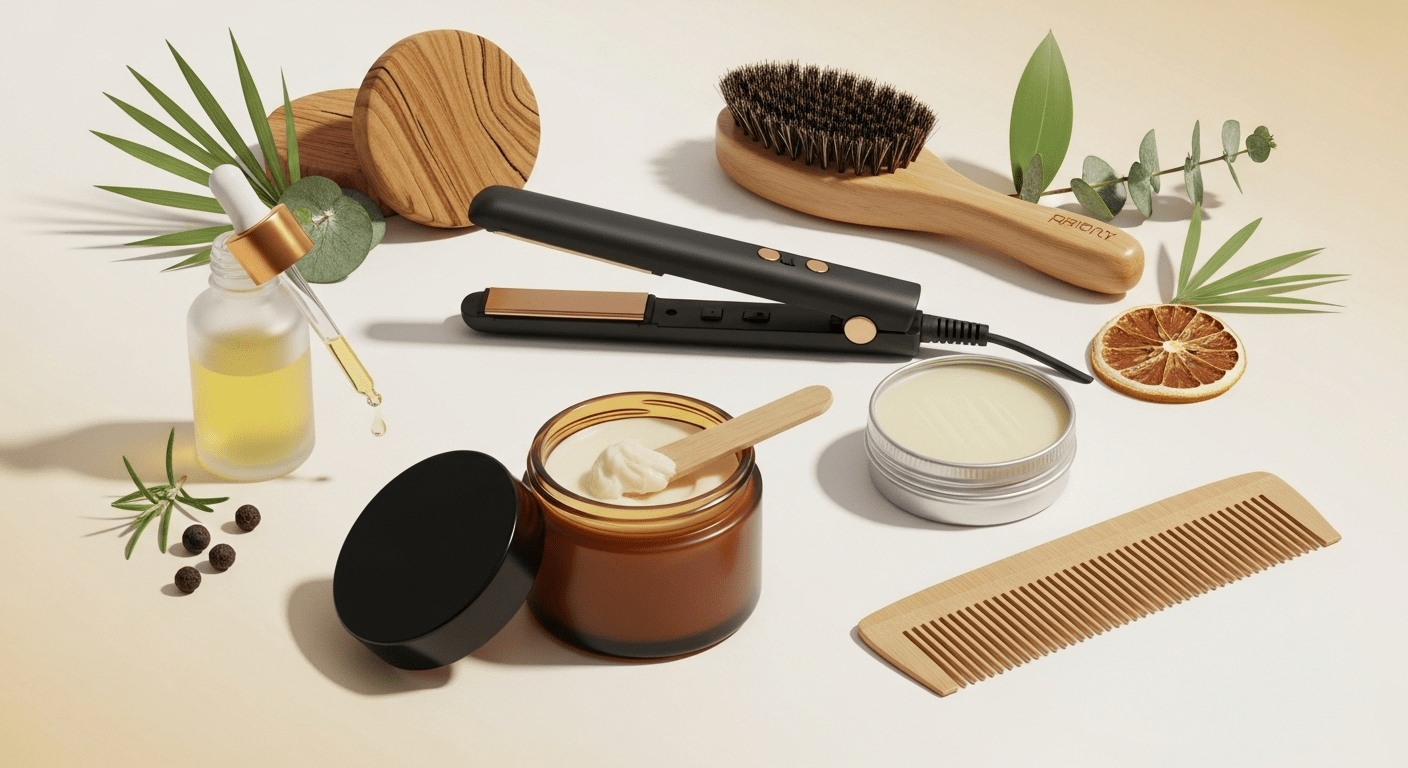Everyone wants glowing, healthy skin and the path to get there can feel overwhelming. Most people think they need a complicated routine with dozens of products but research shows that nearly 80 percent of skincare results come from just five simple steps. Skip the clutter and discover how a few targeted moves can totally transform the way your skin looks and feels.
Table of Contents
- Step 1: Gather Your Essential Facial Care Products
- Step 2: Cleanse Your Skin Thoroughly to Remove Impurities
- Step 3: Exfoliate Gently to Promote Cell Renewal
- Step 4: Apply a Hydrating Mask for Deep Moisture
- Step 5: Moisturize Effectively to Lock in Hydration
- Step 6: Protect Your Skin with Sunscreen for Daily Care
Quick Summary
| Key Point | Explanation |
|---|---|
| 1. Understand your skin type | Knowing whether your skin is oily, dry, or sensitive guides product selection for effective care. |
| 2. Always cleanse thoroughly | Use a gentle cleanser to remove impurities, creating a fresh base for other skincare products. |
| 3. Exfoliate 1-2 times weekly | Regular exfoliation removes dead skin cells, promoting renewal and enhancing the effect of treatments. |
| 4. Apply a hydrating mask | Use hydrating masks to deeply moisturize and rejuvenate your skin, ideally once a week. |
| 5. Never skip sunscreen | Daily sunscreen application protects against UV damage, preventing premature aging and skin issues. |
Step 1: Gather Your Essential Facial Care Products
Building a comprehensive facial care routine starts with assembling the right products tailored to your unique skin needs. Your journey toward healthy, radiant skin begins by curating a thoughtful collection of skincare essentials that will serve as the foundation for your daily regimen.
The first critical step involves selecting high-quality products that address your specific skin concerns. Start by understanding your skin type - whether you have oily, dry, combination, sensitive, or normal skin. This fundamental knowledge will guide your product selection process and help you avoid potential irritations or ineffective treatments.
Most dermatologists recommend a basic skincare toolkit that includes several core products. Your essential facial care collection should include:
- A gentle cleanser appropriate for your skin type
- Hydrating moisturizer with SPF protection
- Targeted serum addressing specific skin concerns
- Exfoliant for weekly skin renewal
- Makeup remover or cleansing oil
When selecting these products, prioritize ingredients that match your skin’s requirements. For instance, individuals with dry skin might seek hyaluronic acid and ceramide-rich formulations, while those with oily skin should look for lightweight, non-comedogenic options. Discover more about selecting the perfect skincare essentials to customize your routine effectively.
Consider purchasing travel-sized or sample versions initially to test product compatibility with your skin. This approach allows you to experiment without significant financial investment and helps identify which formulations work best for your unique complexion. Pay attention to how your skin responds during the first few weeks of use, noting any changes in texture, hydration, or potential sensitivity.
Remember that building an effective facial care routine is an iterative process. Your skin’s needs will evolve with age, environmental factors, and lifestyle changes, so remain flexible and willing to adjust your product selection accordingly. Patience and consistent application are key to achieving the glowing, healthy skin you desire.
Below is an overview table summarizing each main step in the facial care routine, with purpose, recommended frequency, and key results.
| Step | Purpose | Recommended Frequency | Key Result |
|---|---|---|---|
| Gather Essentials | Build a basic skincare toolkit tailored to skin type | Initial setup; adjust as needed | Foundation for effective routine |
| Cleanse | Remove dirt, oil, and impurities | Twice daily (morning & night) | Fresh, clean base for treatments |
| Exfoliate | Promote cell renewal and remove dead skin | 1-2 times per week | Smoother, brighter complexion |
| Hydrating Mask | Deeply moisturize and revitalize skin | Once per week | Plumper, glowing skin |
| Moisturize | Lock in hydration and nourish skin | Twice daily (after cleansing) | Soft, balanced, resilient skin |
| Sunscreen | Protect against UV damage | Every morning, reapply as needed | Prevention of aging & sun damage |
Step 2: Cleanse Your Skin Thoroughly to Remove Impurities
Cleansing is the cornerstone of any effective facial care routine, serving as the critical first defense against environmental pollutants, excess oil, and accumulated daily grime that can compromise your skin’s health and appearance. By thoroughly removing impurities, you create a clean canvas that allows subsequent skincare products to penetrate more effectively and work their transformative magic.
Water temperature plays a crucial role in successful cleansing. Avoid using hot water, which can strip your skin of natural oils and lead to increased dryness and potential irritation. Instead, opt for lukewarm water that gently opens pores without causing unnecessary stress to your skin’s delicate barrier. Begin by dampening your face with this tepid water, preparing your skin for the cleansing process.
Select a cleanser specifically formulated for your skin type, understanding that one-size-fits-all approaches rarely deliver optimal results. For those with oily skin, seek gel-based or foaming cleansers that help control sebum production. Individuals with dry or sensitive skin should choose cream-based or hydrating formulations that maintain moisture while gently removing impurities. Explore our comprehensive guide to finding your perfect cleanser to make an informed selection.
Massage the cleanser into your skin using gentle, circular motions with your fingertips. This technique not only ensures thorough cleansing but also stimulates blood circulation and promotes a healthy, radiant complexion. Pay special attention to areas prone to congestion, such as the T-zone (forehead, nose, and chin), but maintain a delicate touch to avoid unnecessary skin irritation.
Rinse thoroughly, ensuring no product residue remains. A good cleansing routine should leave your skin feeling fresh, balanced, and comfortable - never tight or dry. Pat your face dry with a clean, soft towel, avoiding harsh rubbing that can cause unnecessary friction and potential skin damage.
Verify your cleansing success by checking that your skin feels clean without feeling stripped. Your face should appear refreshed, with no visible makeup residue or excess oil. By mastering this fundamental step, you set the stage for a comprehensive skincare routine that nurtures and protects your skin’s natural beauty.
Step 3: Exfoliate Gently to Promote Cell Renewal
Exfoliation represents a transformative step in your skincare routine, acting as a strategic method to eliminate dead skin cells, unclog pores, and stimulate natural cell regeneration. This critical process helps reveal a brighter, smoother complexion while preparing your skin to absorb subsequent skincare treatments more effectively.
Understanding your skin’s unique exfoliation needs is paramount to achieving optimal results. Different skin types require different approaches - sensitive skin demands a gentler touch, while more resilient complexions can tolerate slightly more aggressive techniques. The key is finding a balanced method that renews without causing unnecessary irritation.
Chemical exfoliants like alpha-hydroxy acids (AHAs) and beta-hydroxy acids (BHAs) offer a sophisticated approach to cell renewal. These ingredients work by dissolving the bonds between dead skin cells, allowing them to be swept away more efficiently than traditional physical scrubs. Glycolic acid and salicylic acid are particularly effective, with glycolic acid targeting surface-level cell renewal and salicylic acid penetrating deeper to address congested pores. Learn more about selecting the right exfoliation method to match your specific skin concerns.
When applying your chosen exfoliant, start with a small amount and gently massage it into clean, dry skin using circular motions. Avoid applying excessive pressure, which can cause micro-tears or irritation. Most chemical exfoliants work best when left on the skin for a specified duration - typically between 5-10 minutes - before being rinsed thoroughly with lukewarm water.
Frequency is crucial in maintaining a balanced exfoliation routine. For most skin types, exfoliating 1-2 times per week provides an ideal balance between cell renewal and skin protection. Those with sensitive skin might start with once weekly, while individuals with more resilient complexions could potentially tolerate slightly more frequent treatments.
After exfoliation, your skin will appear more refined and luminous. Watch for signs of successful cell renewal: a smoother texture, reduced appearance of fine lines, and a more even skin tone. However, be attentive to any signs of over-exfoliation such as redness, sensitivity, or increased dryness. Your skin should feel refreshed and renewed, not irritated or uncomfortable. By mastering this delicate process, you unlock your skin’s natural ability to regenerate and maintain a youthful, radiant appearance.

Step 4: Apply a Hydrating Mask for Deep Moisture
A hydrating mask represents the ultimate rescue mission for your skin, delivering an intense burst of moisture that replenishes and revitalizes your complexion. This crucial step goes beyond typical moisturizing, providing a concentrated treatment that penetrates deep into the skin’s layers, addressing dehydration and restoring your skin’s natural radiance.
Preparation is key to maximizing your mask’s effectiveness. Begin by ensuring your skin is completely clean and slightly damp, which helps enhance product absorption. Select a mask that aligns with your specific skin concerns - whether you’re battling dryness, seeking anti-aging benefits, or looking to improve overall skin texture. Hyaluronic acid, glycerin, and ceramide-rich formulations offer exceptional hydration capabilities.
Application technique matters significantly in achieving optimal results. Use clean fingertips or a soft facial brush to apply the mask evenly, avoiding the delicate eye area. Create a uniform layer that allows the product to work its magic, ensuring complete coverage without excessive thickness. The goal is a smooth, consistent application that allows active ingredients to penetrate effectively.
Explore our comprehensive guide to selecting the perfect hydrating mask to match your unique skin needs. Different masks require different treatment times, so carefully follow the specific instructions provided with your chosen product. Most hydrating masks recommend leaving the treatment on for 10-15 minutes, allowing sufficient time for ingredients to deeply penetrate and nourish the skin.
While waiting, create a relaxing environment. Consider incorporating gentle relaxation techniques like deep breathing or listening to calming music. This not only enhances the overall experience but can also help reduce stress, which indirectly supports skin health.
After the recommended duration, remove the mask using lukewarm water and gentle patting motions. Your skin should feel immediately transformed - plump, soft, and radiantly hydrated.
 Look for these verification signs of a successful mask treatment:
Look for these verification signs of a successful mask treatment:
- Skin feels noticeably more supple and smooth
- Reduced appearance of fine lines and texture irregularities
- A natural, healthy glow without greasiness
- Improved skin elasticity and bounce
Remember that hydration is an ongoing process. While a mask provides an intensive treatment, consistent daily moisturizing and proper hydration will help maintain these remarkable results. By making this step a regular part of your skincare routine, you’re investing in long-term skin health and vitality.
Step 5: Moisturize Effectively to Lock in Hydration
Moisturizing represents the critical final step in your facial care routine, transforming the cumulative effects of previous skincare steps into a comprehensive protection and nourishment strategy. This process goes beyond simple surface hydration, creating a protective barrier that seals in moisture, defends against environmental stressors, and supports your skin’s natural regenerative processes.
Timing is everything when applying moisturizer. The optimal window is immediately after cleansing and treatment steps, when your skin is still slightly damp. This approach allows the moisturizer to trap existing moisture, significantly enhancing its hydrating potential. Select a moisturizer specifically formulated for your unique skin type, understanding that one-size-fits-all approaches rarely deliver optimal results.
For individuals with dry skin, seek rich, cream-based moisturizers containing ingredients like ceramides, hyaluronic acid, and glycerin. Those with oily or combination skin should opt for lightweight, non-comedogenic formulations that provide hydration without excessive heaviness. The key is finding a balance that nourishes without overwhelming your skin’s natural balance.
Explore our comprehensive guide to selecting the perfect moisturizer to match your specific skin requirements. When applying, use gentle upward motions, starting from the center of your face and moving outward. This technique not only ensures even coverage but also helps stimulate circulation and promote a natural, healthy glow.
Pay special attention to typically neglected areas like the neck and décolletage. These regions are often more delicate and prone to early signs of aging, making them critical zones for thorough moisturization. Use a slightly smaller amount of product, applying with the same gentle upward strokes to maintain skin elasticity and prevent premature sagging.
Verify the effectiveness of your moisturizing routine by checking for these key indicators:
- Skin feels soft and smooth, without greasiness
- No visible dry patches or flakiness
- Improved skin elasticity and bounce
- A natural, healthy radiance
Remember that moisturizing is not a one-time event but a continuous commitment. Consistent application helps maintain your skin’s hydration levels, supports its natural protective barrier, and contributes to long-term skin health. By mastering this final step, you’re not just applying a product - you’re investing in your skin’s future resilience and beauty.
Step 6: Protect Your Skin with Sunscreen for Daily Care
Sunscreen represents your skin’s ultimate defense mechanism, serving as a critical shield against harmful ultraviolet radiation that can cause premature aging, hyperpigmentation, and potentially serious long-term skin damage. This final protective step transforms your carefully crafted skincare routine into a comprehensive defense strategy for maintaining healthy, resilient skin.
Selecting the right sunscreen is paramount to effective protection. Look for broad-spectrum formulations that guard against both UVA and UVB rays, with a minimum SPF of 30. Individuals with sensitive skin should seek mineral-based sunscreens containing zinc oxide or titanium dioxide, which provide gentler protection compared to chemical alternatives. Consider your daily activities and skin type when choosing - lightweight, non-comedogenic options work best for those prone to breakouts, while more hydrating formulations suit dry or mature skin.
Application technique determines the effectiveness of your sun protection. Apply sunscreen generously and uniformly, ensuring complete coverage of all exposed areas. Most people significantly underuse sunscreen, applying only 25-50% of the recommended amount. The general rule is to use approximately one teaspoon for your entire face and neck, gently massaging the product in circular motions to guarantee even distribution. Discover more about selecting the perfect daily sun protection to optimize your skincare routine.
Timing is crucial in sunscreen application. Apply your sunscreen as the final step in your morning skincare routine, ideally 15 minutes before potential sun exposure. This waiting period allows the product to fully absorb and create an effective protective barrier. For prolonged outdoor activities, reapplication every two hours is essential, particularly if you’re swimming, sweating, or directly exposed to sunlight.
Verify the effectiveness of your sun protection by checking for these key indicators:
- No visible redness or skin sensitivity after sun exposure
- Consistent, even skin tone without new dark spots
- Skin feels protected and comfortable
- No greasy or heavy residue from sunscreen application
Remember that sun protection extends beyond facial sunscreen. Consider additional protective measures like wearing wide-brimmed hats, seeking shade during peak sunlight hours, and wearing protective clothing. By making sunscreen a non-negotiable daily habit, you’re not just preventing immediate skin damage but investing in your long-term skin health and youthful appearance.
Use this troubleshooting checklist table to help identify and verify the results of each step, ensuring your facial care routine works effectively.
| Step | What to Check For | Signs of Success | Possible Issues |
|---|---|---|---|
| Cleanse | Skin feel after washing | Fresh, balanced, not tight | Tightness or residue left |
| Exfoliate | Skin texture after | Smoother, radiant, even tone | Redness, irritation, or dryness |
| Hydrating Mask | Immediate skin feel | Plump, soft, natural glow | Greasiness or no change |
| Moisturize | Skin appearance after application | Soft, no dry patches, elastic | Greasy or flaky patches |
| Sunscreen | Skin after sun exposure | Protected, no redness or spots | Redness or heavy residue |
Elevate Your Facial Care with GNS Beauty’s Expert Solutions
Are you struggling to find skincare products that genuinely match your evolving routine and skin goals? The article “Step by Step Facial Care for Healthy Skin in 2025” highlighted how confusing it can be to build a routine that actually delivers results, from sourcing eco-friendly options to recognizing what works for your exact skin type. Missing just one step or using the wrong product can leave your skin feeling tight, dull, or unprotected, and can set back your progress toward a naturally radiant look. If you are searching for guidance on cleansers, exfoliants, hydrating masks, or reliable sunscreen, you deserve a partner dedicated to self-care and real results.

Find solutions designed to evolve with your skin at GNS Beauty & Personal Care. Explore a curated selection of sustainable skincare and wellness essentials tailored to each step in your routine. Dive into expert tips and discover must-have beauty essentials for every makeup lover or unlock the secrets to flawless daily care in our comprehensive skincare guide. Start experiencing confidence-boosting, healthy skin now, and see why so many choose GNS Beauty for the future of personal wellness. Your journey to healthy, glowing skin begins here.
Frequently Asked Questions
What are the essential products for a facial care routine?
To build a comprehensive facial care routine, you should include a gentle cleanser, hydrating moisturizer with SPF, a targeted serum, an exfoliant for weekly use, and a makeup remover or cleansing oil tailored to your skin type.
How often should I exfoliate my skin?
Most skin types benefit from exfoliating 1-2 times per week. If you have sensitive skin, you might start with once a week to avoid irritation, while more resilient complexions can tolerate slightly more frequent exfoliation.
Why is moisturizing important after cleansing and exfoliating?
Moisturizing is crucial because it locks in hydration, protects the skin’s barrier, and nourishes the skin after cleansing and exfoliation, ensuring your complexion remains healthy and resilient.
How can I properly apply sunscreen for maximum effectiveness?
Apply sunscreen as the final step in your morning skincare routine, ensuring to cover all exposed areas. Use about one teaspoon for your face and neck, and apply it 15 minutes before sun exposure. Reapply every two hours, especially if swimming or sweating.








Leave a comment
All comments are moderated before being published.
This site is protected by hCaptcha and the hCaptcha Privacy Policy and Terms of Service apply.